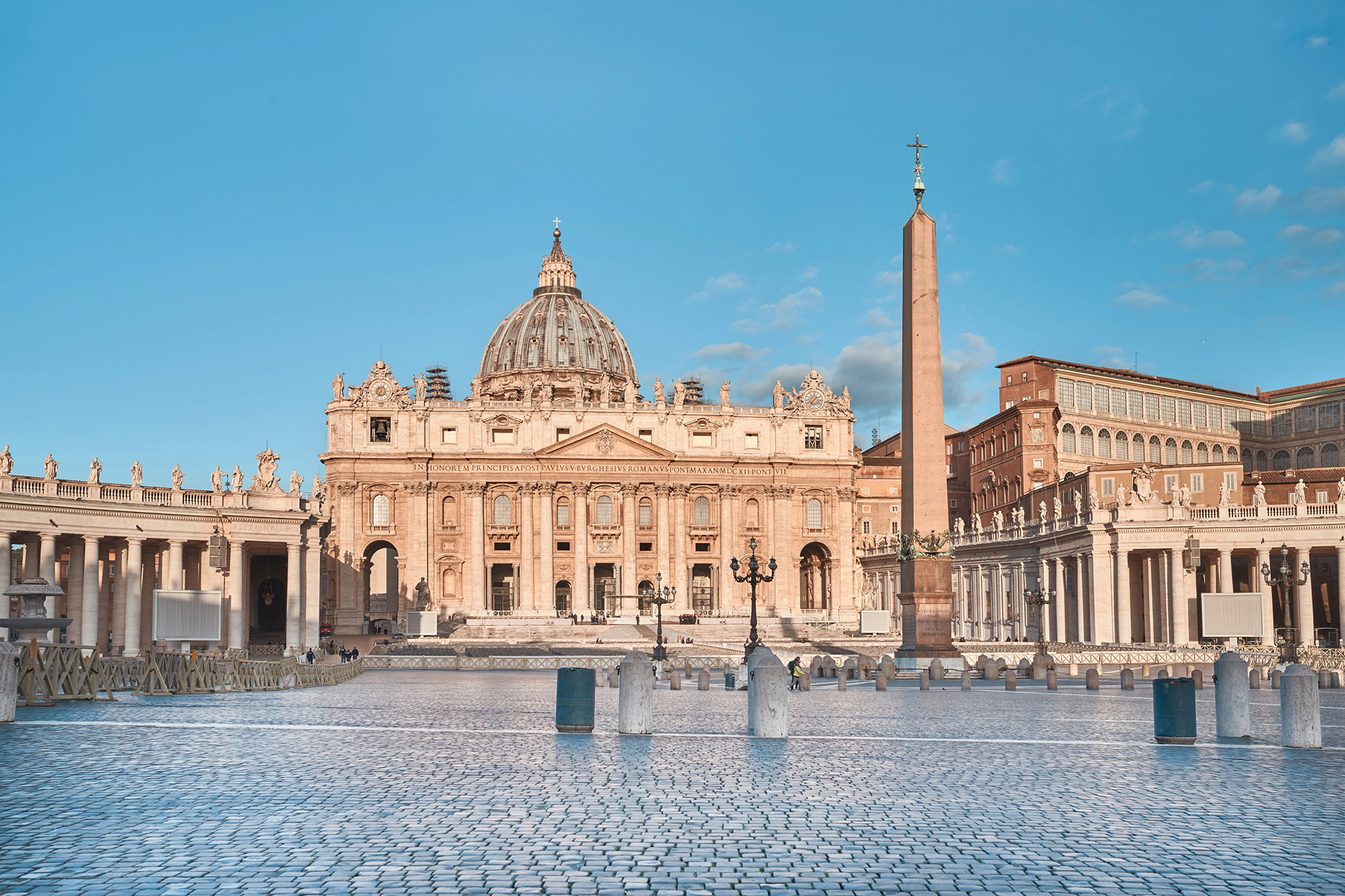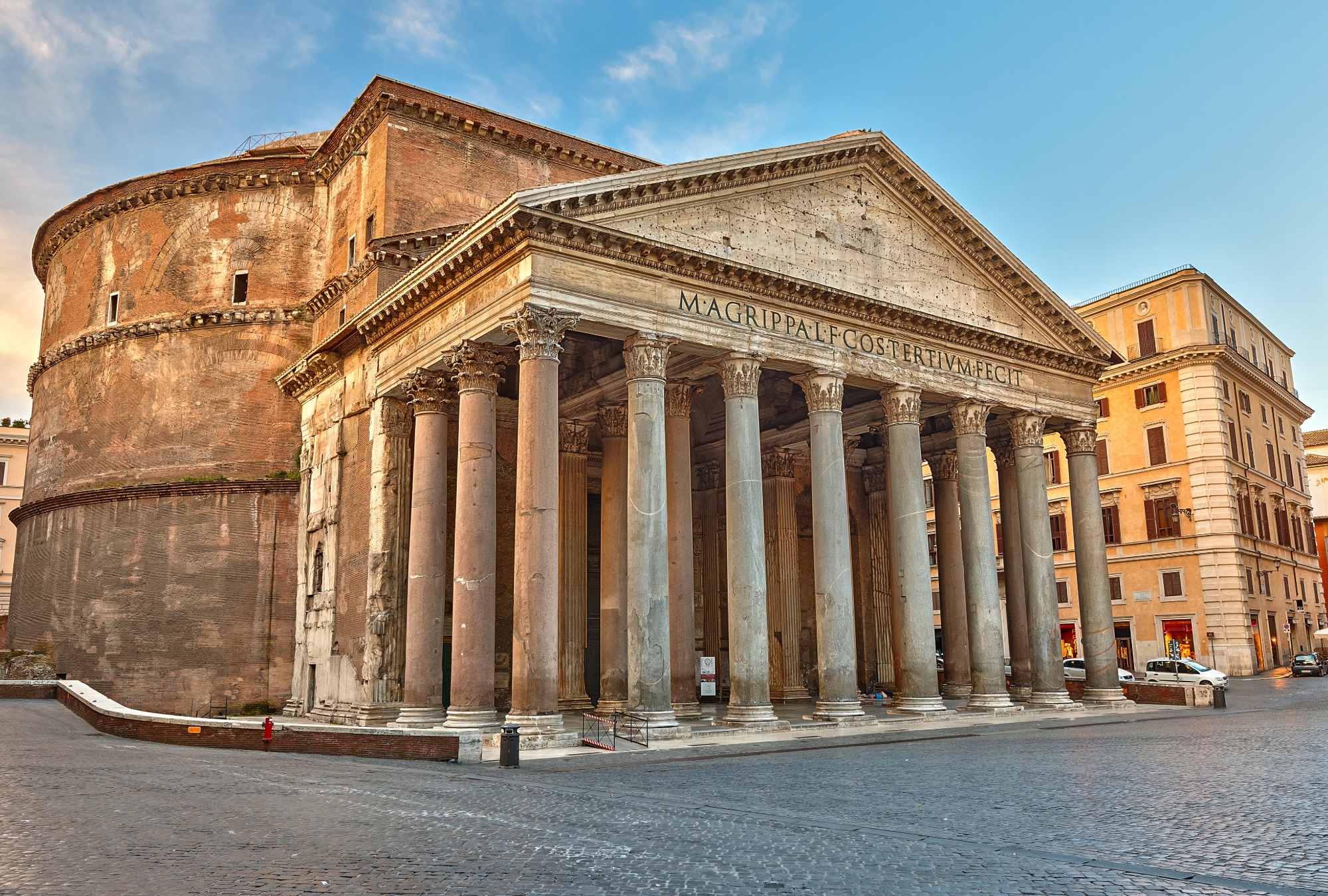From the Iseum to the Pyramid: An Egyptian Journey in the Heart of the Eternal City
→Iseum, Centro Storico, San Giovanni e Città del Vaticano
- Language: English
Included services:
- Authorized guide
- Headsets during the tour
- Entrance to Iseum
Day 1
The tour begins at Piazza Venezia, the vibrant heart of modern Rome. Amid the grandeur of the Vittoriano monument and the bustling city life, beside the staircase of Palazzo Venezia stands Madama Lucrezia, one of Rome’s famous “talking statues.” Some believe she represents the ancient goddess Isis, a silent symbol of the deep connection between Rome and Egypt.
Not far away, in the Campo Marzio district, stood the Iseum Campense, the largest Roman sanctuary dedicated to Egyptian cults. Built during the late Republic and expanded under Caligula and Domitian, it covered a vast area adorned with sphinxes, statues, and authentic obelisks—some of which, like the obelisk in Piazza Navona, originated here. Remnants of the Iseum are still visible along Via di San Stefano del Cacco and in the recently reopened Iseum Museum, which is included in the visit.
Walking towards Piazza della Pigna, the name itself recalls the large bronze pine cone that probably decorated a sacred area connected to the Iseum and is now preserved in the Vatican Gardens. The pine cone’s symbolism—rebirth and immortality—was cherished in Egyptian spirituality as well. The journey continues to Piazza della Minerva, where ancient history meets Baroque art: a small Egyptian obelisk supported by an elephant sculpted by Bernini stands before the church of Santa Maria sopra Minerva. This obelisk, coming from the nearby Iseum, acts as a messenger of arcane knowledge, perfectly in tune with the esoteric cult of Isis.
A few steps away lies the Pantheon, where another obelisk, originally placed in the Temple of the Sun at Heliopolis, now towers over the square. Its alignment with the Pantheon’s dome reflects an ancient cosmic harmony between heaven and earth, myth and science. Near Piazza San Luigi dei Francesi, archaeological excavations uncovered fragments of a still-buried Egyptian obelisk, evidence of the deeply rooted Isis cult in ancient Campo Marzio. At Piazza di Sant’Eustachio, visitors encounter a Baroque fountain featuring a basin made from Egyptian granite, sourced from the Neronian-Alexandrian baths—a tangible imprint of Imperial Egypt in the heart of Rome.
The route concludes at Piazza Navona, where Bernini’s Fountain of the Four Rivers is crowned by an Egyptian pink granite obelisk from Aswan. Nearly 17 meters tall, it was brought to Rome by order of Domitian and decorated in situ with hieroglyphs celebrating the emperor among the gods. Originally located between the temples of Isis and Serapis, it now soars amid the Baroque wonders of the square, closing the itinerary with a perfect blend of the sacred, art, and power.
The route then continues to St. Peter’s Square, in Vatican City, where another authentic Egyptian obelisk from Heliopolis stands at the center of Bernini’s colonnade. It was brought to Rome by Caligula to adorn the nearby Circus of Nero, and later moved to its current location by Pope Sixtus V, placing it at the heart of Christendom. Interestingly, this is one of the few Egyptian obelisks in Rome without any hieroglyphic inscriptions—a silent and enigmatic monolith, bearing witness to the transformation from pagan Rome to Christian Rome. To deepen the experience, a visit to the Gregorian Egyptian Museum inside the Vatican Museums is highly recommended.
Day 2
The second day begins at San Giovanni in Laterano, the cathedral of Rome, which houses the tallest Egyptian obelisk in the world: over 32 meters of red granite from the Temple of Amun at Karnak in Egypt. It was brought to Rome in the 4th century by Emperor Constantius II, originally placed in the Circus Maximus, and later erected in its current location in the 17th century. This obelisk, authentic in its inscriptions and history, stands as one of the most imposing symbols of Rome’s desire to absorb and redefine Egyptian sacredness.
Along the way, a stop at the Capitoline Museums is suggested. Although the museum is better known for its Roman and Renaissance collections, it preserves a significant and fascinating selection of Egyptian and Egyptianizing artifacts, many of which come directly from the ancient Iseum Campense. In the Palazzo Nuovo, an Egyptian-themed route leads through statues of Isis, Serapis, Anubis, and sphinxes—testimonies to the depth of Egyptian influence on the Roman world. The Egyptian Room displays both original artifacts and Roman works in Egyptian style, revealing how the Empire internalized and reinterpreted Nile culture.
Continuing past the Circus Maximus, the route arrives at the Forum Boarium, where the Temple of Hercules Victor stands. Though not Egyptian in origin, its circular form and ancient atmosphere evoke the sacred and the foreign, fitting seamlessly into this thematic journey. The itinerary culminates at the Pyramid of Cestius, a monumental tomb from the 1st century BCE, built during the height of Rome’s Egyptian craze following the conquest of Egypt. With its sharp angles and white marble façade, the pyramid still rises today as a striking and strangely harmonious foreign body—perfectly Roman, yet unmistakably Egyptian—set beside the Aurelian Walls.


